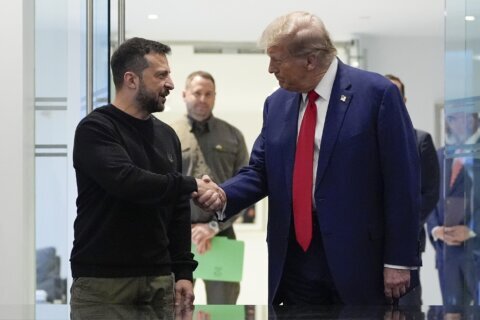Starting out as a young basketball player, it was always Kjell de Graaf’s goal to play at the collegiate level in the U.S. A native of Rotterdam, Netherlands, de Graaf, who is 6 feet, 10 inches tall, says earning an athletic scholarship was something he worked really hard toward.
“Apart from going pro, college is the highest level you can play at while continuing your education, which was also very important to me,” says de Graaf, a junior chemical engineering major at the New Jersey Institute of Technology. “After a long road I ended up receiving a full athletic scholarship to play at NJIT.”
While competition is fierce to receive a full scholarship, more than 1,000 U.S. colleges and universities offer opportunities for talented student-athletes to play for a school team as a way to fund their education, according to EducationUSA, a network of advising centers supported by the U.S. Department of State.
Here are three things prospective international students should do when seeking an athletic scholarship in the U.S.:
— Start early.
— Understand the three collegiate sports organizations.
— Build a strong online presence.
Start Early
Experts advise prospective international students to start early and excel at their chosen sport to gain a scholarship to study in the U.S. EducationUSA, for instance, advises starting to research options 18 to 24 months prior to the date students plan to attend a U.S. university.
This also means getting good grades in high school, and may require taking standardized admissions tests like the SAT or ACT and English language proficiency tests like the TOEFL and IELTS to meet college admissions requirements.
[READ: 2021 To-Do List for Prospective International Students.]
“International student-athletes have a lot of details to sort out when they’re looking to play their sport at a U.S. college or university,” says Kyle Winters, recruiting manager for Next College Student Athlete, or NCSA, an athletic recruiting network that helps high school athletes with their goal of playing at the collegiate level.
Winters says transcripts need to be accurately translated and students need to thoroughly understand the eligibility process. The admissions process and eligibility process are two different things, he explains, with the former being the usual process all students go through when applying to U.S. universities.
“In order for a student-athlete to play at a U.S. college or university, they need to both be recruited and gain admission to that university,” says Winters, a former high school pitcher who earned a full-ride scholarship to the University of New Mexico and eventually played professional baseball.
The eligibility process refers to eligibility standards and requirements student-athletes must meet in order to get recruited or play at the college level, he says, which are set by the organizations in the U.S. that govern college athletics. Students should note that some requirements may have changed due to the coronavirus pandemic.
“COVID has changed the testing requirement — no SAT or ACT requirement for prospects graduating in 2021-22 — and the types of credentials the NCAA will use in the evaluation process for initial eligibility,” says Danielle Cohea, associate athletics director for compliance and operations at Cleveland State University. The National Collegiate Athletic Association, or NCAA, is a nonprofit organization in the U.S. that regulates and administers intercollegiate athletics.
Since the pandemic has led to many high schools using pass-fail grading, Winters says students can use such grades to meet core course requirements.
“The NCAA academic eligibility is based on a combination of SAT or ACT test scores and your core course GPA,” Winters says. “Those core courses are a specific combination of math, English and other courses that ensure student-athletes are taking regular high school courses. International student-athletes need to ensure their academics will meet those requirements.”
Understand the Three Collegiate Sports Organizations
In the U.S., three organizations set the requirements and rules for college sports. There are more than 20,000 international student-athletes enrolled and competing at NCAA schools, and thousands more study and compete at National Association Intercollegiate Athletics, or NAIA, and National Junior College Athletic Association, or NJCAA, schools across the U.S.
The NAIA represents mostly private, smaller colleges and universities while the NJCAA represents community colleges. The NCAA is the largest organization that governs intercollegiate athletics, and does so across three divisions: Division I and II consists of large public universities, with Division I sports being the most competitive, and Division III typically represents smaller private colleges.
“Athletic scholarships are offered at the NCAA Division I and Division II levels, as well as at the NAIA and NJCAA levels. NCAA Division III colleges do not offer athletic scholarships, but nearly 80% of Division III student-athletes receive some kind of financial aid,” Winters says.
[Read: 5 Myths About Athletic Scholarships.]
The NCAA notes on its website that the “young men and women who compete in college sports are students first, athletes second.”
Any student who wants to play sports at a NCAA Division I or II school needs to register with the NCAA Eligibility Center, Cohea says. A student-athlete who wants to compete his or her first year in NCAA Division I or Division II athletics must be certified as a qualifier by the NCAA Eligibility Center, meaning he or she must have graduated from high school, completed 16 core courses and have a specific core course GPA, among other requirements.
In addition to an academic certification, since the NCAA says those who wish to compete must be amateur athletes, Cohea notes, “Their amateurism status will also need to be certified, so it is important that the prospect researches the amateurism requirements for each division.” She says students will answer amateurism questions when they register with the NCAA Eligibility Center for Division I and II.
Students should review the NCAA’s 2021-2022 Guide to International Academic Standards for Athletics Eligibility to find details on initial eligibility requirements, such as core curriculum, GPA and ACT/SAT scores, among other information. And through the NCAA’s search tool, students can look into the different types of school, scholarship and division levels to find their best match.
For example, the New Jersey Institute of Technology is a NCAA Division I school and has 321 student-athletes in total — 51 of which are international from 27 different countries, and with 43 of the international student-athletes receiving some form of athletic scholarship, says Lenny Kaplan, associate vice president and director of athletics at NJIT.
Before emailing coaches, prospective international student-athletes should research universities carefully, Kaplan says.
“Things like do they offer athletic scholarships at that school or in that sport? If so, are they full or partial scholarships? What are the school’s admission and academic requirements? Do they have the major I want to study? Where is the school located, and are there other international students and/or student-athletes at the school?” Kaplan says.
Build a Strong Online Presence
Athletic scholarships are often decided by the coaching staff, experts say, through the recruiting process where college coaches seek out athletes and decide how much scholarship money to award them.
Winters says while international student-athletes need exposure to college coaches through any form of a camp or showcase, since those are not currently happening due to the coronavirus pandemic, they have to work a lot harder to be noticed.
Camps and showcases allow student-athletes to highlight their skills and be seen by college coaches, Winters says, noting that some are hosted by universities and others are hosted by brands and businesses that specialize in a sport.
” Due to COVID, college coaches aren’t traveling domestically or internationally looking for recruits,” Winters says. “But if an international student-athlete does everything they can to be seen online — actively connect with college coaches and keep their grades up — they’ll have a much better chance of earning a scholarship.”
[Read: 3 Benefits of Sports for International Undergrads.]
Cohea says students can send game film to coaches and “talk to their club coaches and other coaches in their home country, as many of them have an understanding of the collegiate system in the U.S.” She says students can also work with a recruiting service but “should be very cautious when choosing a recruiting service and research any company fully.”
Kylie Misdorp, a tennis player from South Africa, says NCSA’s recruiting services helped guide her through each step, such as reaching out to coaches with introductory emails and initiating conversations.
“The recruiting process can be very perplexing when it comes to all the rules and requirements,” Misdorp says.
Through the process, she says she was able to form a bond with a tennis coach at Eckerd College in Florida, who she says noticed her efforts and went out of his way to make her dream possible. Misdorp recently committed to play at Eckerd in fall 2021 and has received both athletic and academic scholarships. Her major is undecided.
“To feel that connection from so many miles away, I knew I was making the right decision regardless of the scholarship,” Misdorp says.
Getting noticed can be tough. However, de Graaf says earning a spot on the Netherlands youth national basketball team allowed him to play against top talent from all over Europe and get noticed by teams and scouts. He says that led to a bigger opportunity to move to the Canary Islands, Spain, to play for the Canarias Basketball Academy, which he says helped put him on the radar of U.S. recruiters.
Looking back, de Graaf says for all athletes, it boils down to working tirelessly on their skills and getting better in their sport.
“Only with the right mindset will you be able to get there,” de Graaf says. “Work your way up and try to get yourself out there.”
Searching for a college? Get our complete rankings of Best Colleges.
More from U.S. News
A Guide to Scholarships for International Students
15 Most Affordable Colleges for International Students
International Students: What to Know When Failing to Make Academic Progress
3 Tips for International Student-Athletes originally appeared on usnews.com







